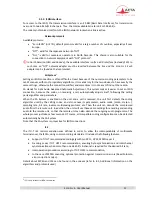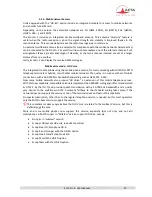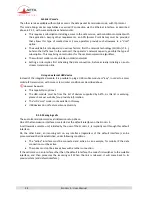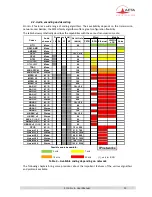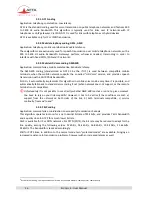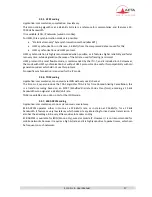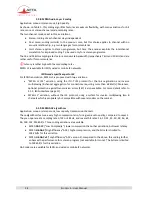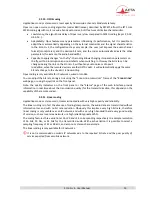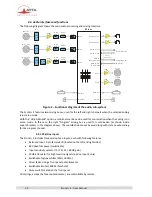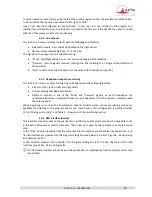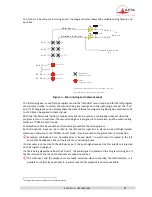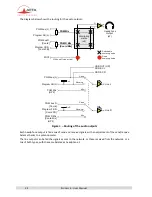
S
COOPY
+ S - User Manual
9
Available audio coding algorithms
The audio coding algorithm can be selected depending on the required quality and the available
network bandwidth. The following algorithms are currently available:
Codec
Bit rate
(coding)
Bit rate
(total)1
Audio
bandwidth
Typical use, main features
G711
64 kbit/s
86 kbit/s
3 kHz
Voice, telephony
Compatible with IP phones
CELP
24 kbit/s
28.5 kbit/s
7 kHz
Suitable
for
high
quality
speech;
Low network bandwidth consumption
G722
64 kbit/s
86 kbit/s
7 kHz
High quality speech.
Compatible with some IP phones.
MPEG Layer II
64 to 256
kbit/s
73 to 275
kbit/s
Up to
20 kHz
Highest quality, suitable for speech and music
MPEG AAC-LC
16 to 256
kbit/s
30 to 277
kbit/s
Up to
20 kHz
Low bit rate, suitable for speech and music
MPEG HE-AAC and
HE-AAC v2
16 to 128
kbit/s
23 to 139
kbit/s
Up to
20 kHz
Very low bit rate, suitable for speech and music
4SB ADPCM
128 or 256
kbit/s
173 or 301
kbit/s
15 kHz
Low latency, suitable for speech and music
OPUS
12 to 256
kbit/s
28 to 272
kbit/s
Up to
20 kHz
Low bit rate and low latency, suitable for
speech and music
Linear L16/L20/L24 512 to 2304
kbit/s
592 to 2384
kbit/s
Up to
20 kHz
Best quality, very low latency
Table 2 – Overview of algorithms available in IP mode
IP multicast mode
The multicast mode allows an encoder device to transmit an audio programme to several decoders by
sending a single encoded stream to a multicast group address. The link is unidirectional by nature. This
mode can be used on a local area network, and on larger private networks that can manage the
multicast mode. On the other hand, Internet cannot support this routing mode.
In this mode, the S
COOPY
+ S uses the RTP protocol to manage the audio stream, like in the unicast mode,
but the SIP protocol is not applicable here; instead a proprietary signalling system is used. As the link is
unidirectional, the unit has to be set either as a "sender" in order to encode and transmit the audio
stream to the selected group address, or as a "receiver" to receive and decode such stream coming from
a "sender" device.
The audio coding algorithm can be selected with just the same capability as for the unicast mode
described above.
SIP and SDP protocols
The SIP protocol is a signalling protocol, used for IP connections, which allows the S
COOPY
+ S to
interoperate with IP phones and other SIP compatible audio codecs, in a way similar to ISDN or POTS
connections. Details about the SIP protocols can be found in the annex (refer to 8.2, Overview of the SIP
protocol).
1 Informative value; higher than the "net" encoded audio bit rate because of the protocol overhead

















